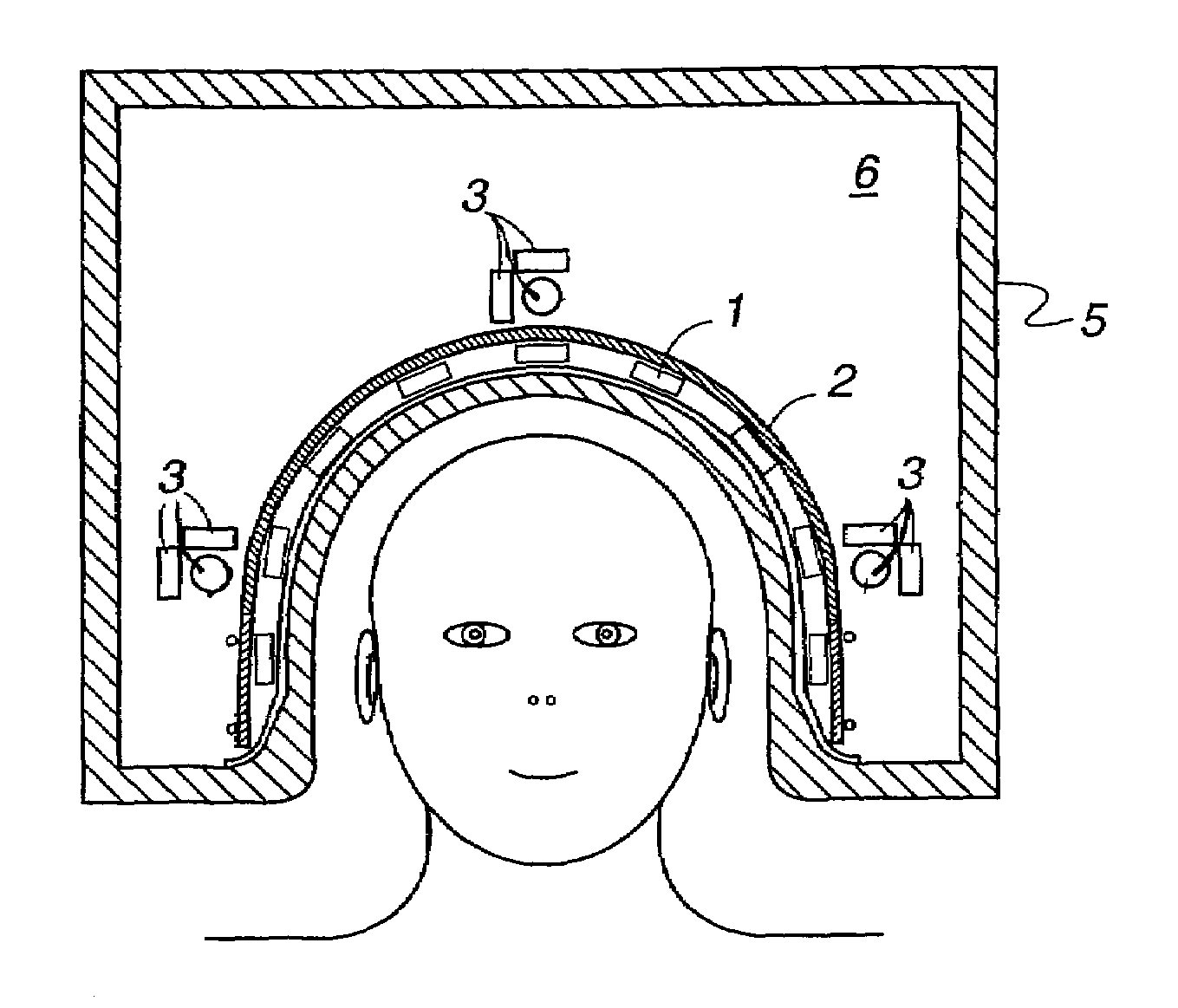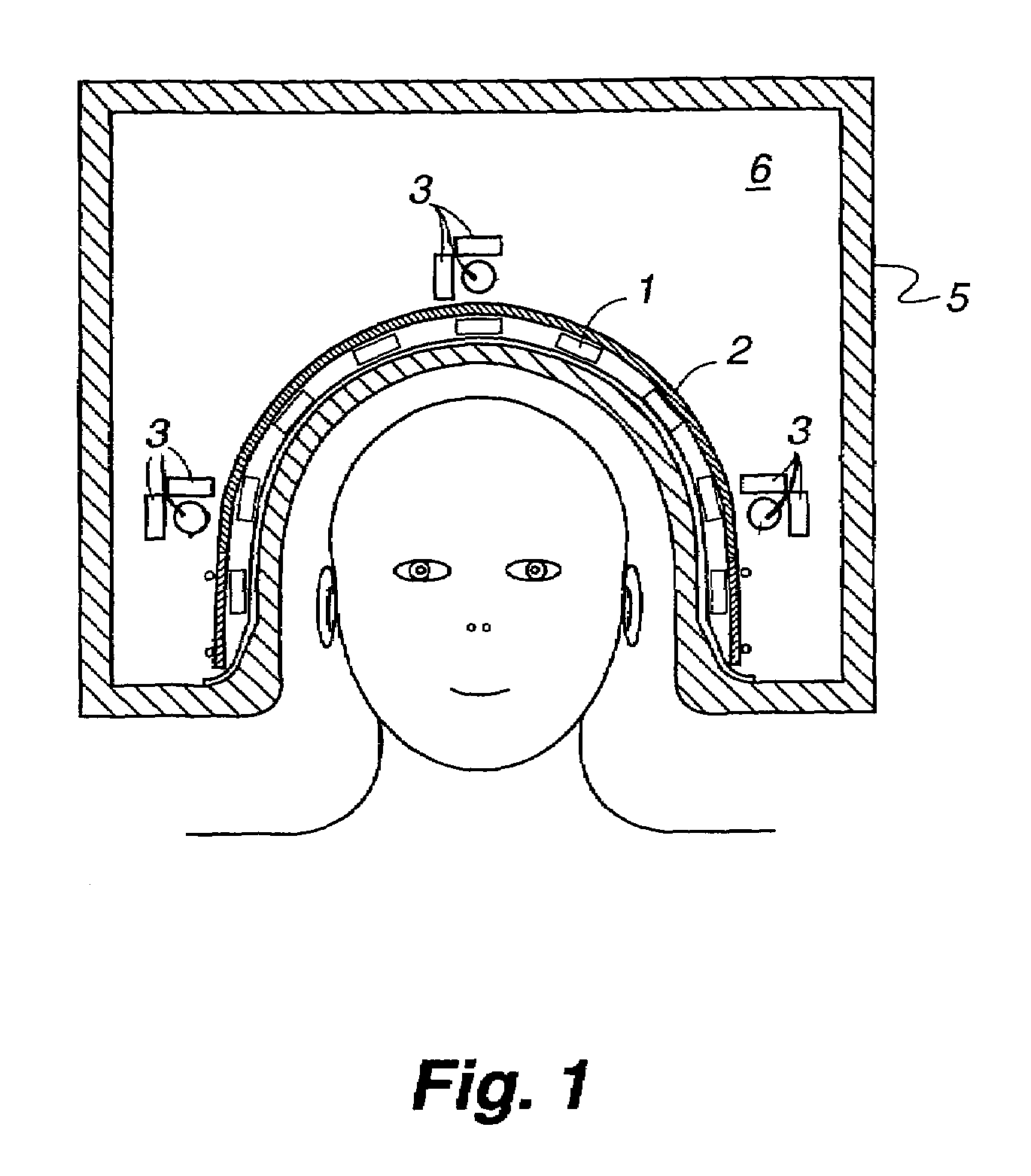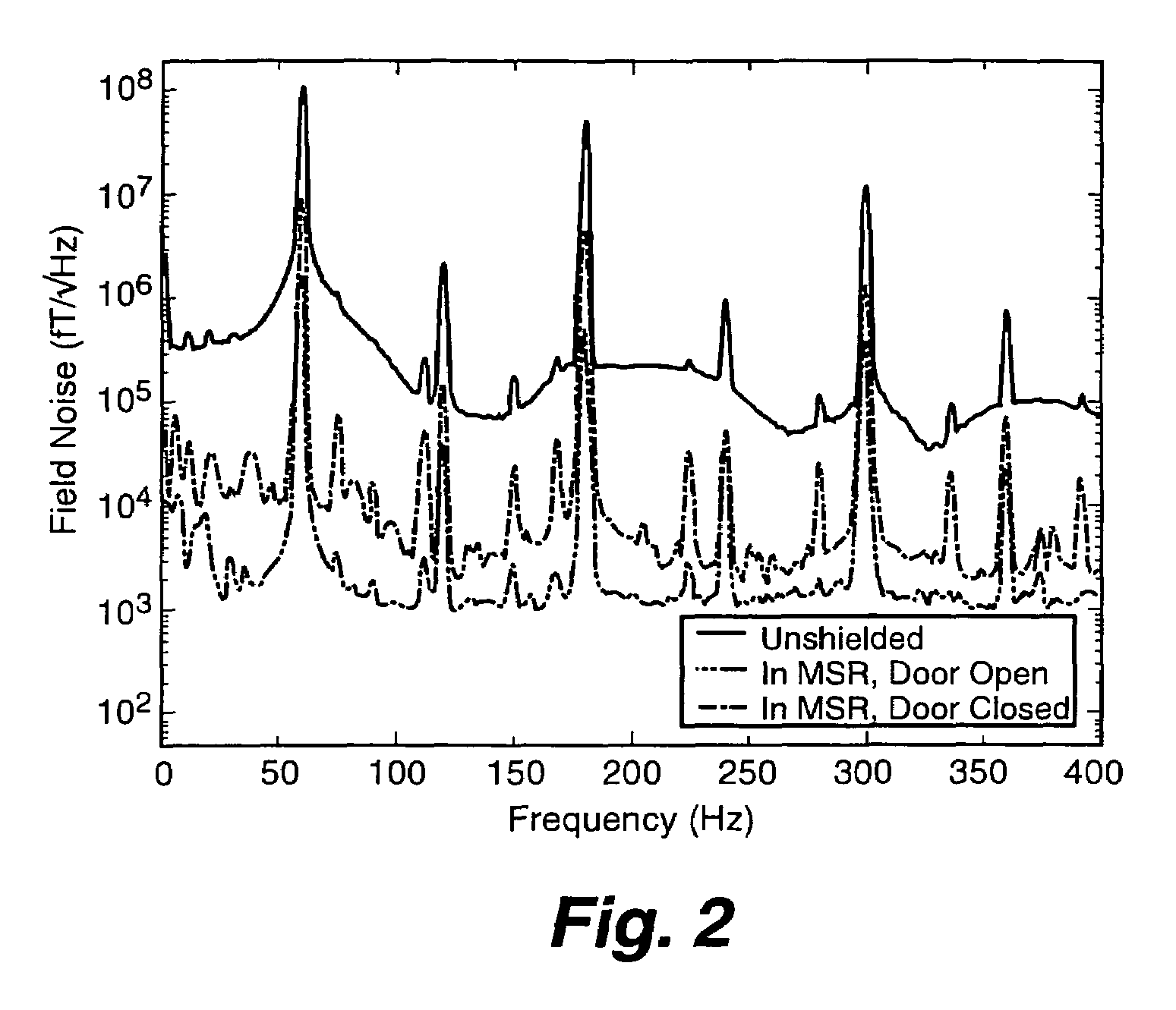Noise cancellation in magnetoencephalography and electroencephalography with isolated reference sensors
a reference sensor and magnetoencephalography technology, applied in the field of magnetoencephalography and electroencephalography, can solve the problems of inability to observe such a signal noninvasively, unsurpassed meg temporal resolution, and inability to meet the needs of medical science,
- Summary
- Abstract
- Description
- Claims
- Application Information
AI Technical Summary
Benefits of technology
Problems solved by technology
Method used
Image
Examples
Embodiment Construction
[0027]A unique whole-head MEG system incorporating a superconducting imaging-surface (SIS) is provided with the goal of dramatically improving S / N and source localization accuracy while mitigating the extraordinary cost of current systems, as described in U.S. Pat. No. 5,008,622, issued Apr. 6, 1991, and incorporated herein by reference. A prior art Los Alamos SIS-MEG system [13, 14] consists of an array of 149 low-Tc SQUID magnetometers surrounded by a superconducting helmet-like structure (fabricated with lead, a type-I superconductor below ˜8K).
[0028]In addition to noise-free recording of functional brain signals with MEG, the apparatus and method of the present invention have further application to electroencephalography (EEG) recordings using SQUID sensors to measure the ambient background fields and electropotential sensors to measure brain signals. Brain function signals recorded simultaneously by MEG and EEG arrays are becoming increasingly more common because the informatio...
PUM
 Login to View More
Login to View More Abstract
Description
Claims
Application Information
 Login to View More
Login to View More - R&D
- Intellectual Property
- Life Sciences
- Materials
- Tech Scout
- Unparalleled Data Quality
- Higher Quality Content
- 60% Fewer Hallucinations
Browse by: Latest US Patents, China's latest patents, Technical Efficacy Thesaurus, Application Domain, Technology Topic, Popular Technical Reports.
© 2025 PatSnap. All rights reserved.Legal|Privacy policy|Modern Slavery Act Transparency Statement|Sitemap|About US| Contact US: help@patsnap.com



